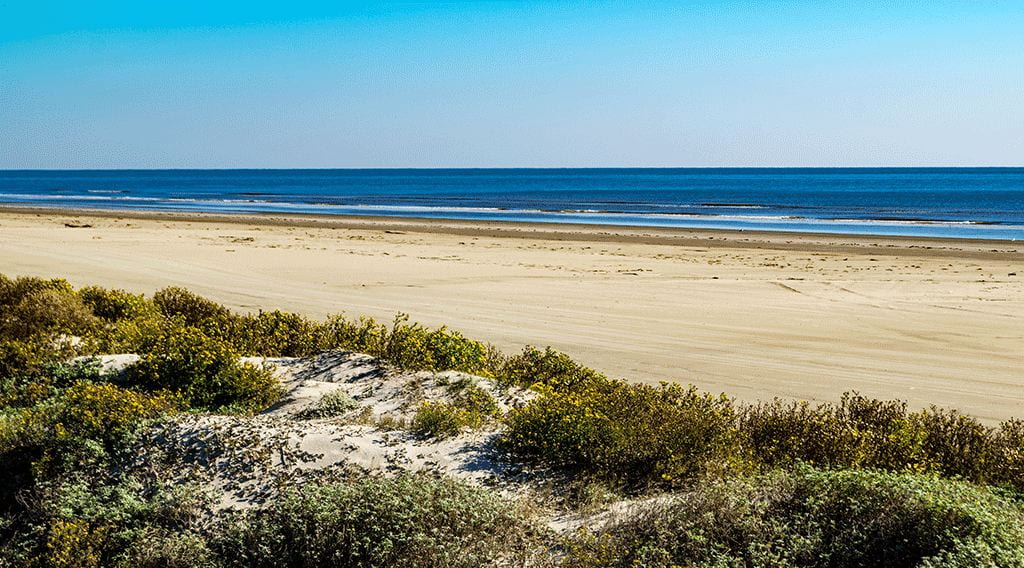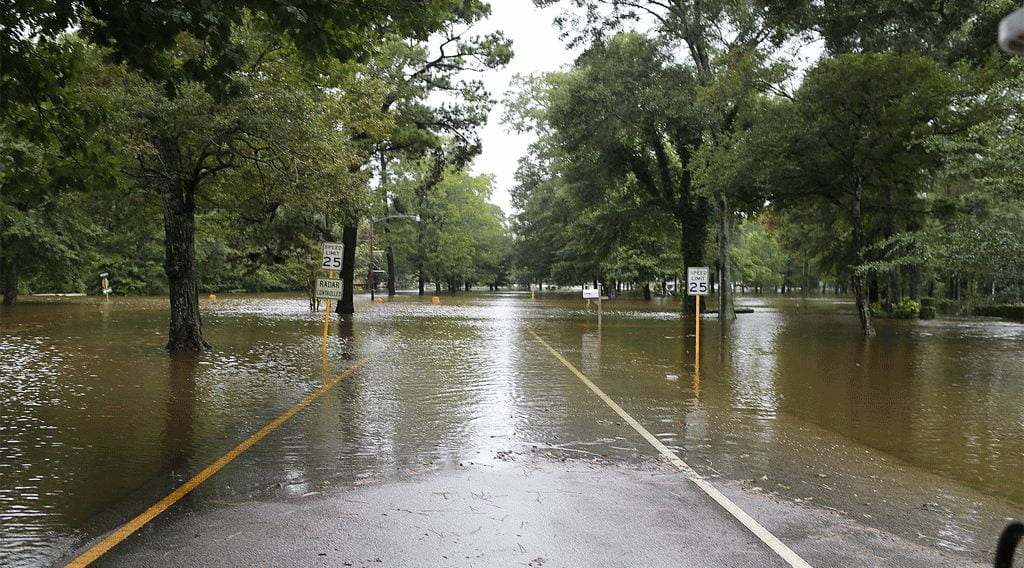With 38 public universities and 35 private colleges and universities in the state and many more across the country (and the world) interested in Texas, there’s a great deal of academic scholarship focused on water in the Lone Star State. In this column, I provide brief summaries to several recent academic publications on water in Texas.

Let’s start thinking about water!
Long-Term Water Quality Analysis Reveals Correlation Between Bacterial Pollution and Sea Level Rise in the Northwestern Gulf of Mexico

Gulf of Mexico beach at Galveston, Texas near the San Luis Pass
Sea-level rise provides challenges not only for beach erosion and flooding but also for water quality. As sea levels rise, septic tanks originally and safely positioned above sea level become less and less safely positioned. In this long-term (11-year) study of enterococci data at 66 beaches, the authors found that 22 beaches had enterococci levels that frequently exceeded beach action levels. Counties vulnerable to sea-level rise frequently had enterococci levels exceeding beach action levels, although there were correlations to population and time. Enterococci were also significantly higher in bayside sites than gulfside sites. Violation of beach action levels more than doubled between 2009 and 2020, increasing from about 5 percent to almost 12.5 percent.
Citation
Powers, N.C., Pinchback, J., Flores, L., Huang, Y., Wetz, M.S., and Turner, J.W., 2021, Long-term water quality analysis reveals correlation between bacterial pollution and sea level rise in the northwestern Gulf of Mexico: Marine Pollution Bulletin, v. 166, 8 p.
Attributable Human-Induced Changes in the Magnitude of Flooding in the Houston, Texas Region During Hurricane Harvey

Hurricane Harvey Flooding and Damage. Credit:Jill Carlson
Attribution science is the science of attributing what part of an event was due to climate change. For example, we don’t know if there would or would not have been a Hurricane Harvey with or without climate change, but, due to warmer temperatures which in turn strengthen storms and cause them to hold more moisture, we can estimate how much worse Harvey was. Wehner and Sampson take the attribution science for Harvey and extend it to the flooding that Harvey caused. Attribution science suggests that climate change enhanced Harvey’s rainfall by 7 to 38 percent locally. The authors found that the amount of floodwaters similarly increased but that, overall, the increase in total flood area was less. However, for the most heavily flooded parts of Houston, flood volume and area were much greater than local rainfall. The authors estimated that the cost of flooding damage due to the climate change component of Harvey was $13 billion.
Citation
Wehner, M., and Sampson, C., 2021, Attributable human-induced changes in the magnitude of flooding in the Houston, Texas region during Hurricane Harvey: Climate Change, v. 166, no. 20, 13 p.
A Model of the Raft of Cabeza de Vaca, Florida to Texas
Álvar Núñez Cabeza de Vaca, an early Spanish explorer, was part of the challenging Pánfilo de Narváez expedition to North America in 1528. After departing Cuba for Pánuco (modern Tampico), a hurricane struck the entourage, and the pilot landed at what is today Tampa Bay, believing them to be 40 miles from Pánuco instead of the actual >800 miles. After failing to march around Tampa Bay to Pánuco, Narváez returned to find his ships had left him behind. In response, Narváez marched to Apalachee and, while starving and slowly eating their horses, ordered his remaining ~250 men to build five 33-foot-square rafts to sail to Pánuco. Wardle, intrigued by the detailed description of the rafts, wondered how crowded they were and how many rowers could be accommodated. In response, he built a 1:75 scale model of one of the rafts (including conquistadors in pantaloons!) to test the remembrance. Indeed, the rafts had plenty of space for rowers, a sail, and a tiller. The rafts made it to present-day Galveston before another hurricane destroyed them.

Álvar Núñez Cabeza de Vaca statue in Hermann Park, Houston
Citation
Wardle, B., 2021, A model of the raft of Cabeza de Vaca, Florida to Texas, Fall 1528: Nautical Research Journal, v. 66, no. 1, p. 55-63.
Join Our Mailing List
Subscribe to Texas+Water and stay updated on the spectrum of Texas water issues including science, policy, and law.
